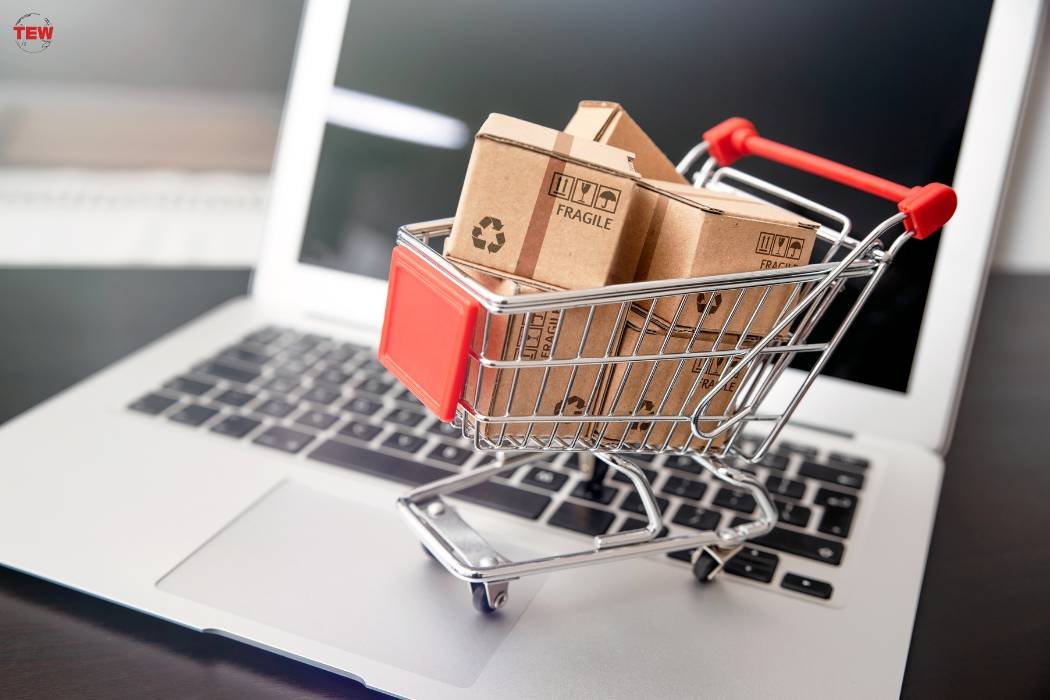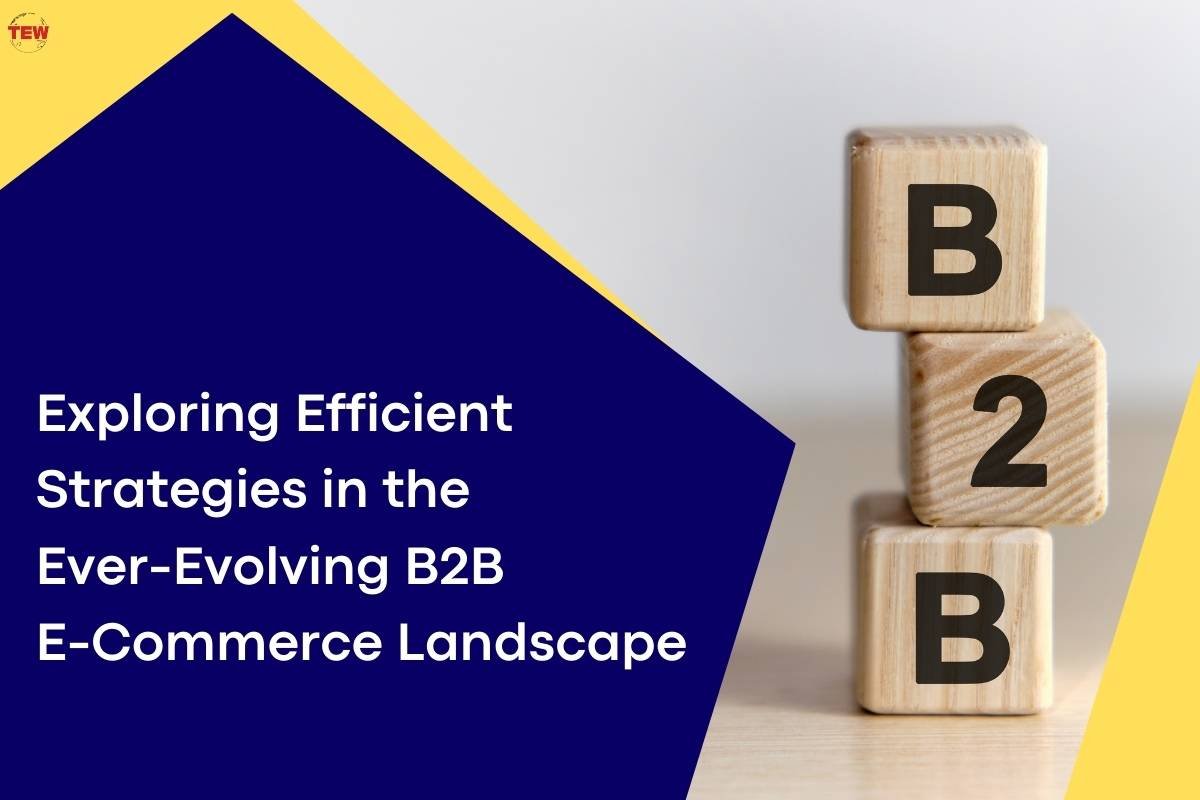Within the fast-paced world of business-to-business (B2B) electronic commerce, success entails more than just staying afloat—it also involves forging a path through the ever-changing currents. As technology and consumer behaviors evolve, so does the B2B e-commerce landscape, presenting both challenges and opportunities for businesses. In this exploration, we’ll delve into the intricacies of B2B e-commerce landscape, dissecting the key strategies that propel businesses forward and keep them ahead of the curve.
Understanding the B2B E-Commerce Landscape
To embark on this journey, it’s essential to grasp the essence of B2B e-commerce. At its core, B2B e-commerce refers to the digital exchange of goods and services between businesses. This transactional landscape transcends traditional methods, ushering in a new era of efficiency and connectivity. One pivotal aspect that underlines this shift is the B2B ordering platform as this acts as the linchpin, streamlining the procurement process by providing a centralized space for businesses to place and manage orders seamlessly. Its significance lies in catalyzing efficiency, reducing errors, and fostering transparent communication between trading partners.
Streamlining Operations through Integrated Platforms
Beyond the veneer of a tailored shopping experience, personalization in B2B e-commerce landscape represents a nuanced understanding of each client’s unique needs, preferences, and challenges. It transcends the conventional boundaries of product recommendations, delving deep into the realms of pricing strategies, payment terms, and the interface of the ordering platform. At its essence, personalization is about forging meaningful connections by recognizing that businesses, much like individuals, have distinct requirements.

In the ever-evolving B2B landscape, where transactions are often complex and multifaceted, a one-size-fits-all approach is not only impractical but potentially detrimental. Successful B2B entities recognize this and harness the power of personalization to create bespoke solutions for their clients. It involves customizing pricing models based on the unique relationship with each client, offering flexible payment terms that align with their financial cycles, and even adapting the user interface of the ordering platform to mirror the workflow preferences of specific businesses.
The impact of personalization extends beyond the transactional moment; it fosters a sense of partnership and loyalty. Clients feel not only understood but valued, as their nuances are acknowledged and accommodated. This, in turn, lays the foundation for enduring relationships that transcend the transactional nature of B2B interactions. As businesses increasingly recognize the intrinsic value of personalization, the B2B e-commerce landscape undergoes a paradigm shift. It is no longer merely about selling products or services; it’s about crafting experiences that resonate with clients on a profound level.
This focus on personalization is not a fleeting trend but a fundamental recalibration of how businesses engage with their clientele. As technology continues to advance, providing more sophisticated tools for data analysis and customer profiling, the potential for personalization in B2B e-commerce becomes boundless. It’s not merely a key driver of success; it is the cornerstone upon which lasting, mutually beneficial partnerships are built in the dynamic and competitive arena of B2B transactions.
Personalization: A Key Driver of B2B Success

Unlike its B2C counterpart, B2B personalization extends beyond surface-level product recommendations. It is an intricate dance of understanding and responding to the unique needs, preferences, and challenges faced by individual clients. In this arena, the B2B ordering platform emerges as a dynamic stage where personalization takes center stage. Tailoring the user interface and functionality to suit the specific workflows of diverse businesses, transforms the procurement process into a seamless and bespoke experience. Pricing models and payment terms, traditionally rigid in the B2B realm, find fluidity through personalized approaches, ensuring that the financial arrangements align with the unique circumstances of each client. This nuanced approach extends further, encompassing the very essence of the business-client relationship.
Embracing Automation for Scalability
Businesses navigating the intricate web of digital transactions recognize that scalability is not merely about handling increased volumes; it’s about doing so with finesse and minimal resource strain. Automation becomes the cornerstone, intricately weaving itself into the fabric of daily operations.
Tasks that were once manual and time-consuming, such as order processing, invoicing, and inventory management, undergo a metamorphosis as sophisticated algorithms and technologies take the reins. The B2B ordering platform, when seamlessly integrated with automated processes, evolves into a dynamic nerve center. It not only facilitates transactions but orchestrates a symphony of operations, ensuring that each note aligns with the broader goal of scalable growth.
The beauty of automation lies in its ability to liberate human resources from mundane, repetitive tasks, allowing teams to focus on strategic endeavors that demand creativity and nuanced decision-making. As businesses embrace this paradigm shift, they not only fortify their operational foundations but also position themselves on a trajectory that can effortlessly accommodate increased transaction volumes without succumbing to the complexities that often accompany growth.
The allure of scalability, coupled with the efficiency bestowed by automation, beckons businesses to not merely adapt but to thrive in an environment where evolution is not a luxury but a necessity.
PunchOut catalogs stand out as a pivotal tool driving efficiency and enhancing customer satisfaction. These catalogs streamline the purchasing process by enabling seamless integration between buyers’ procurement systems and suppliers’ e-commerce platforms. By offering a direct connection, PunchOut catalogs empower B2B buyers to access real-time product information, pricing, and inventory levels directly from their procurement interfaces. This not only reduces the burden on buyers to manually input orders but also ensures accuracy and consistency across transactions. Moreover, PunchOut catalogs facilitate a personalized shopping experience, allowing buyers to navigate supplier catalogs within their familiar procurement environment, thereby increasing adoption rates and fostering stronger supplier-buyer relationships. In essence, integrating PunchOut catalogs into B2B e-commerce strategies represents a strategic approach to meeting the evolving needs of modern buyers while driving operational efficiency and competitiveness in the marketplace.
Data-Driven Decision-Making

In the contemporary landscape of B2B e-commerce, where information flows in abundance, the concept of data-driven decision-making stands as a formidable pillar for businesses striving to thrive amidst complexity. Data is not just an afterthought; it’s the compass that guides strategic maneuvers. By harnessing the power of analytics and insights, businesses can glean a profound understanding of market dynamics, customer behaviors, and operational efficiency.
Integrated into the very fabric of decision-making processes, data-driven insights obtained from the ordering platform become transformative. Real-time visibility into order patterns, inventory levels, and customer preferences allows businesses to proactively respond to shifts in demand, optimize supply chains, and fine-tune pricing strategies. Moreover, the continuous feedback loop created by data-driven decision-making fosters a culture of adaptability. Businesses become agile entities, capable of swiftly adjusting strategies based on empirical evidence rather than relying on intuition alone. In this era of data abundance, the capacity to turn raw information into actionable intelligence is not just an asset; it’s a competitive advantage that propels businesses toward sustainable success in the dynamic B2B e-commerce landscape.
By embracing integrated platforms, personalization, automation, and data-driven insights, businesses can navigate the twists and turns of this dynamic realm. The B2B ordering platform, acting as the nerve center, not only facilitates transactions but serves as a testament to the evolution and resilience of businesses in the digital age. As we continue to explore and implement these efficient strategies, the path to triumph in the ever-shifting B2B e-commerce landscape becomes clearer, promising sustainable growth and prosperity.




